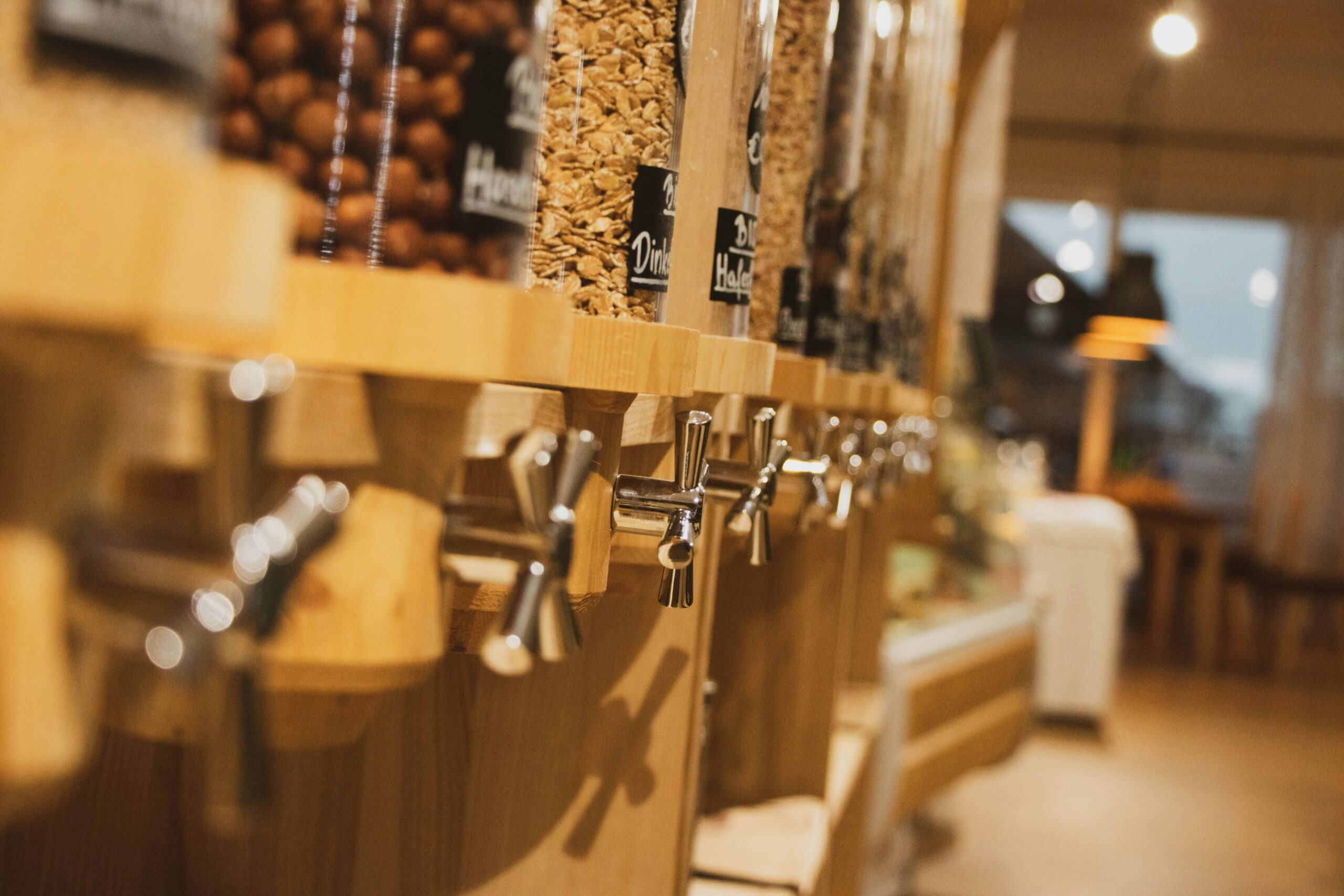Living a zero waste lifestyle in Australia might sound like something only inner-city hipsters with beeswax wraps and kombucha SCOBYs can achieve, but don’t write it off just yet.
Whether you’re in the middle of Melbourne or outback Queensland, there are simple, practical ways Aussies are ditching the rubbish and living more sustainably.
Let’s break down what zero waste really looks like in Australia, with real-life, practical and actionable examples.
What is the Zero Waste Lifestyle?
In simple terms, a zero waste lifestyle means sending as little as possible to landfill. Think reduce, reuse, and recycle, but arguably more importantly, rethink and refuse. It’s about changing the way we consume so waste never becomes part of the equation to begin with.
In Australia, where we generate around 76 million tonnes of waste per year, moving toward zero waste is more urgent than ever!
6 Zero Waste Lifestyle Examples
1. Bulk Food Stores and BYO Containers
Across Australia, from Brisbane to Bunbury, bulk food stores are booming. Shops like The Source Bulk Foods, Naked Foods, and local co-ops allow you to bring your own containers to stock up on everything from rice to dried mango. No plastic packaging. No waste.
Bonus: It usually means fewer preservatives and additives in your food too.
2. Op Shopping and Clothing Swaps
Fast fashion is out. Circular fashion is in. Aussies are turning to op shops, vintage stores, and clothing swaps to refresh their wardrobes without contributing to textile waste (which, by the way, sends over 200,000 tonnes to landfill each year in Australia).
Even better? You’ll score some absolute gems, hello retro windbreaker.
3. Composting, No Matter Where You Live
You don’t need a backyard to compost in Australia anymore. From Bokashi bins in apartments to council-run green waste programs and sharewaste.com.au (which connects you to locals with compost), there are composting options for everyone.
Food waste makes up about 40% of the average Aussie household bin so diverting it from landfill is a game-changer.
Composting in Australia is doable whether you’re rural or urban. Not sure where to start?
Read: How to Build a DIY Compost Bin
4. Reusables Over Disposables
Australians are increasingly ditching single-use plastics thanks to state-level bans and community pressure. Everyday swaps include:
- Stainless steel straws
- Reusable coffee cups (KeepCup is Aussie-made!)
- Cloth produce bags
- Menstrual cups or period underwear
- Beeswax wraps instead of cling wrap
These might seem small, but over a lifetime? Huge impact.
5. Repair and Reuse Culture
The Repair Cafe movement is growing across Australia. Broken toaster? Torn jeans? You don’t need to throw them out. Head to your local Repair Cafe and fix things for free with the help of volunteers. Or, tap into Aussie DIY culture and learn a few repair skills yourself.
Plus, Facebook Marketplace and Buy Nothing groups help keep stuff in use and out of the tip.
If it’s broke, don’t chuck it…fix it! Australia’s repair and reuse scene is thriving.
6. Local Food and Grow-Your-Own
Farmers markets, community gardens, and backyard veggie patches are all part of the zero waste lifestyle. Buying local food reduces packaging and transport emissions, while growing your own? It doesn’t get more sustainable than that.
Even a few herbs on the windowsill count. Local food = less waste and fewer food miles. Grow what you can, buy what you can’t, locally.
Where Do I Start?
Great question. The best way to start is to do one thing at a time. Choose a room (like the kitchen or bathroom) and look for one simple swap you can make. Maybe it’s switching to bar soap. Or bringing your own bags to the shops. Then build from there.
Don’t try to do it all overnight, sustainable living is a marathon, not a sprint.
Is Zero Waste More Expensive?
Not necessarily. While some reusable products have higher upfront costs, they pay off long term. For example, a KeepCup costs more than a takeaway coffee cup, but you’ll never buy one again. Op shops are cheaper than most retail stores. Bulk foods can save money if you avoid fancy ‘organic only’ versions.
Long story short: you can spend a lot, but you don’t have to. Zero waste can help you save money, especially if you focus on reducing, reusing, and buying less.
Does Zero Waste Save Money? The Financial Benefits of Sustainable Living
Can you Live Zero Waste in Rural or Remote Areas?
Absolutely but it might look different. You might not have a bulk store nearby, but you probably have space to compost. You might not have a Repair Cafe, but chances are you know someone handy.
We live in rural Australia and we find zero waste living more doable than when we lived in the city.
What about stuff I already own that’s not Zero Waste?
Use it! The most sustainable thing is what you already have. Don’t throw out plastic containers or synthetic clothes just because they’re not ‘eco-friendly;. Wear them, fix them, use them, then replace them with better choices when they wear out.
Zero waste is about reducing new waste, not creating waste in pursuit of living a ‘clean, eco’ lifestyle.
The zero waste lifestyle is about making better choices, more often. Whether you’re in the city, the suburbs, or the bush, there are real, Aussie-friendly ways to reduce waste without turning your life upside down.
Start with one change. Then another. Before you know it, you’ll be halfway to a bin-free lifestyle.

